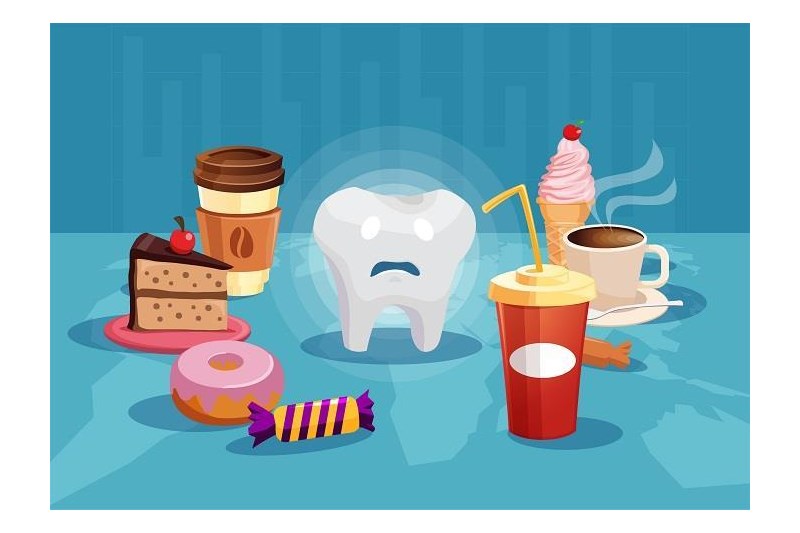Call for government to introduce tough new measures on food companies - as they fail to reduce sugar voluntarily
Published: 11/07/2022
A new snapshot product survey by Action on Sugar and Obesity Health Alliance has exposed the huge variation in portion size and sugar content of popular ‘on the go’ sweet snacks sold in both retail and Out of Home – showing progress to reduce sugar is floundering.
Despite the government challenging the food industry in 2016 to reduce the overall sugar content of food products that contribute the most sugar to children’s intakes by 20 per cent by 2020. This new shock data further proves that robust measures are now urgently needed to incentivise the food industry to reduce sugar, especially as obesity prevalence among primary school children is increasing.
Both groups of experts were amongst the 40 organisations which signed an open letter on April 6, 2022, to the Health Secretary, Sajid Javid. They called on the government to stop delaying publication of the final Sugar Reduction Progress Report and use the forthcoming Health Disparities White Paper to set out the next stringent steps for the sugar reduction programme. Disincentivising food manufacturers (across all sectors) from producing increasingly sugary products is key to this. Recommendations should include regulatory measures such as extending the soft drinks industry levy to the most sugary food categories or introducing a new duty on sugar paid-for by manufacturers, as proposed by Henry Dimbleby in his 2021 National Food Strategy.
Product Data Summary
Focusing on the cakes and biscuits categories from the previous sugar reduction report which outlined industry targets and progress to date, the new survey showed many ‘on the go’ single serve cookies, brownies and doughnuts remain dangerously high in sugar – with Aldi Specially Selected Triple Chocolate cookie (39g sugar per 80g serve) containing up to 10x teaspoons sugar, making it 50 per cent sugar. That’s twice a child’s (aged 4-6) daily limit of sugar and the equivalent of eating 12 custard cream biscuits! This is closely followed by Caffe Nero’s ‘Belgian Chocolate Chip Brownie’ with a whopping eight teaspoons of sugar (31.2g of sugar per 67g serve).
The portion size of cookies also varies considerably from 80g (Aldi ‘Specially Selected Triple Chocolate Cookies’) to half the size at 40g per serve (Asda ‘Baker's Selection Milk Chocolate Cookies’), with no uniformity and limited access to nutrition information or front of pack colour-coded labelling on ‘on the go’ products.
Despite such shockingly high sugar levels overall, the sugar content does vary showing products can be made with far less sugar and sold in smaller portion sizes. For instance, in out of home outlets, Caffè Nero ‘Belgium Chocolate Chip Brownie’ has eight teaspoons of sugar per portion, compared to Greggs ‘Fairtrade Triple Chocolate Brownie’ with two teaspoons of sugar per portion.
When it comes to doughnuts, both Krispy Kreme’s ‘Original Glazed Ring Doughnut’ and Greggs ‘Glazed Ringed Doughnut’ are the worst offenders with each containing three teaspoons of sugar per serve – whereas a ring doughnut from Asda contains one teaspoon of sugar, with the same portion size, showing that this high level of sugar is unnecessary.
Adults and children eat more calories from sugar than is recommended and this is a key driver of rising obesity levels, exacerbated with the Coronavirus pandemic. Reducing sugar consumption to recommended intakes could save the NHS £500 million annually, prevent 4,100 premature deaths and avert approximately 200,000 cases of tooth decay. As most of the sugar we eat is already in the food we buy, yet an interim programme report showed a reduction of just three per cent.
Katharine Jenner, director and registered nutritionist at Action on Sugar says, “The vital evidence of progress (or lack thereof) of the sugar reduction programme is being deliberately kept away from public scrutiny. However, it is clear from our product survey that a voluntary approach to reformulation is not working with most retailers and coffee shops failing to make any significant reductions. These sugary products are enticingly placed near the tills and end of aisles for adults and children to grab ‘on the go’ with their daily coffee or sandwich, encouraging over consumption.”
Holly Gabriel, nutrition manager and registered nutritionist at Action on Sugar explains, “Without doubt, the food industry is not motivated to reduce sugar which means more robust measures are needed to help fix the voluntary sugar reduction programme. The excess of sugar being imported and produced in the UK, sold at low cost, is undoubtedly contributing to this lack of progress. Measures such as the Soft Drinks Industry Levy, which has seen a 35 per cent reduction in sugar within just four years, demonstrates the power of Government to help reduce population sugar intakes and lower risk of associated health implications.”
Caroline Cerny, alliance lead at Obesity Health Alliance says, “This data demonstrates that the food industry can play a vital role in helping people reduce their sugar consumption – but not all companies are prepared to step up and play their part by reformulating their products. This is where the government needs to step in with new regulation that creates a level playing field and financially disincentivises companies from producing and marketing sugary products. If the government is serious about improving our health, it needs to act now.”
Author: N/A









.jpg?width=150&height=100&scale=canvas)



